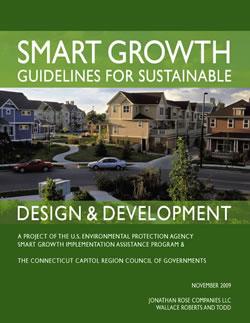
How and where communities locate, design, and develop affordable housing affects their overall approach to growth as well as the household budgets of the residents in that housing. Communities that seek to grow and develop more sustainably can ask themselves the following questions:
- Is affordable housing in my community well located, near transportation choices, and away from sensitive natural areas?
- Are new housing developments designed to encourage walking, connect to nearby uses and amenities, and incorporate parks and open space?
- Are affordable homes being constructed with materials and techniques that reduce energy and water use and improve resident health and well-being?
If the answer to one or more of these questions is "no," then a community is unlikely to be growing in a manner that is economically or environmentally sustainable.
Where housing is located and what transportation options are available make a dramatic difference in how affordable a home is. Other ways to make housing more affordable include techniques that reduce energy and water consumption. Together, smart growth and green building approaches help communities create housing that is more affordable for residents and more environmentally sustainable. For more information on how smart growth strategies can help make housing more affordable, see the Smart Growth and Affordable Housing page.
Smart Growth Guidelines for Sustainable Design and Development (2009) is a resource for communities that seek to locate, design, and develop housing — particularly affordable housing — in a way that reduces household costs, improves residents' quality of life, and invests public resources more sustainably.
The guidelines can serve as a checklist for local officials, state or regional policy makers, developers, and community members to ensure that programs, plans, and proposed developments incorporate the elements needed at the location, site, and building levels to result in more sustainable, affordable housing.
The guidelines provide a range of specific approaches that can incorporated at each step of the housing development process, from site selection to building design. They are organized under three central strategies:
- Identifying prosperous smart growth locations.
- Creating "place" through neighborhood design.
- Employing green building and infrastructure techniques.
While they are not a substitute for certification, these guidelines can help communities or projects use the approaches included in formal certification programs, such as LEED, LEED-ND, Green Communities, or others. Those that seek to obtain certification under one of these programs will have a strong foundation on which to do so if they employ the strategies featured in this publication.
The guidelines are a product of a 2009 Smart Growth Implementation Assistance project with the Capitol Region Council of Governments in Connecticut, in which they are being used to help shape the implementation of the state's Home Connecticut affordable housing program. They were developed for EPA and CRCOG by Jonathan Rose Companies, LLC, and Wallace Roberts Todd, LLC.
Free printed copies of this report are available upon request. Please email nscep@lmsolas.com or call 800-490-9198 and request document EPA 231-K-09-004.
You may need a PDF reader to view some of the files on this page. See EPA’s About PDF page to learn more.